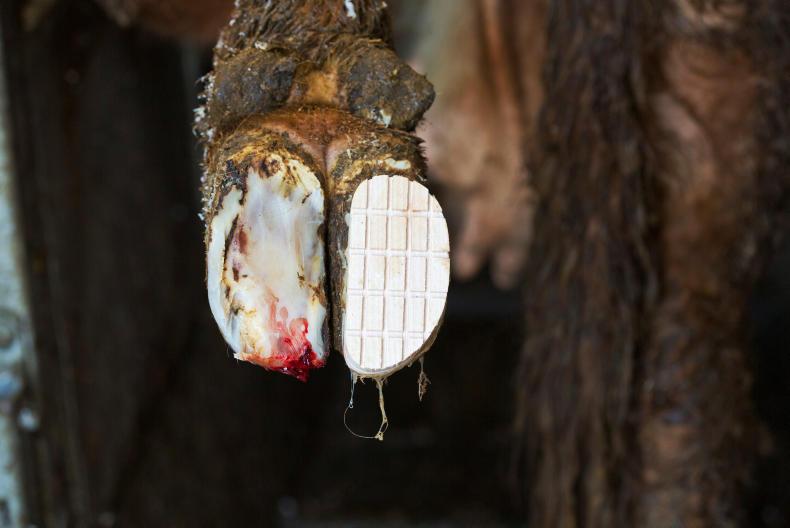This was the message at the Cattle Association of Veterinary Ireland’s (CAVI) annual conference last weekend in Co Cork.
International expert Roger Blowey from the UK highlighted the effect of lameness on dairy cows.
Blowey highlighted the issue of excessive standing as a key factor of causing lameness in dairy cows. He stated that in a normal day a cow stood for between six to eight hours to be milked, fed and interact socially with other cows.
However, this length of time increased if there was inadequate feeding facilities in cramped conditions of less than 2ft per cow, or if cows were prevented from walking back to pasture or cubicles immediately after milking.
The average dairy cow loses up to 400 litres of milk due to lameness.
Blowey said he did not like the idea of cows being made to stand for half an hour after milking.
“They should be allowed to walk back past fresh food (or pushed-up food) and if they walk past and want to lie down, then that is what they should be allowed to do.
“Milking times should be examined to make sure that cows are standing for the minimum time possible.”
Expansion causing issues
As dairy herds in Ireland continue to expand post-quota, the comfort of dairy cows should be taken into account, as lameness can cost farmers dearly in terms of time and finances.
Teagasc estimates that between 20% and 25% of cows in Ireland suffer from some degree of lameness, with each case costing between €160 and €300.
In his presentation, Blowey stated that cows should be given enough space to walk with their heads down and not crowded into collecting yards.
He encouraged farmers to be aware of the internal pecking order within their own herds and ensure that cows lower in the herd hierarchy had enough space to move past the higher-ranking cows.
Read more
Dairy management notes for this week
Grass growth rates dropping but still higher than normal
This was the message at the Cattle Association of Veterinary Ireland’s (CAVI) annual conference last weekend in Co Cork.
International expert Roger Blowey from the UK highlighted the effect of lameness on dairy cows.
Blowey highlighted the issue of excessive standing as a key factor of causing lameness in dairy cows. He stated that in a normal day a cow stood for between six to eight hours to be milked, fed and interact socially with other cows.
However, this length of time increased if there was inadequate feeding facilities in cramped conditions of less than 2ft per cow, or if cows were prevented from walking back to pasture or cubicles immediately after milking.
The average dairy cow loses up to 400 litres of milk due to lameness.
Blowey said he did not like the idea of cows being made to stand for half an hour after milking.
“They should be allowed to walk back past fresh food (or pushed-up food) and if they walk past and want to lie down, then that is what they should be allowed to do.
“Milking times should be examined to make sure that cows are standing for the minimum time possible.”
Expansion causing issues
As dairy herds in Ireland continue to expand post-quota, the comfort of dairy cows should be taken into account, as lameness can cost farmers dearly in terms of time and finances.
Teagasc estimates that between 20% and 25% of cows in Ireland suffer from some degree of lameness, with each case costing between €160 and €300.
In his presentation, Blowey stated that cows should be given enough space to walk with their heads down and not crowded into collecting yards.
He encouraged farmers to be aware of the internal pecking order within their own herds and ensure that cows lower in the herd hierarchy had enough space to move past the higher-ranking cows.
Read more
Dairy management notes for this week
Grass growth rates dropping but still higher than normal





SHARING OPTIONS